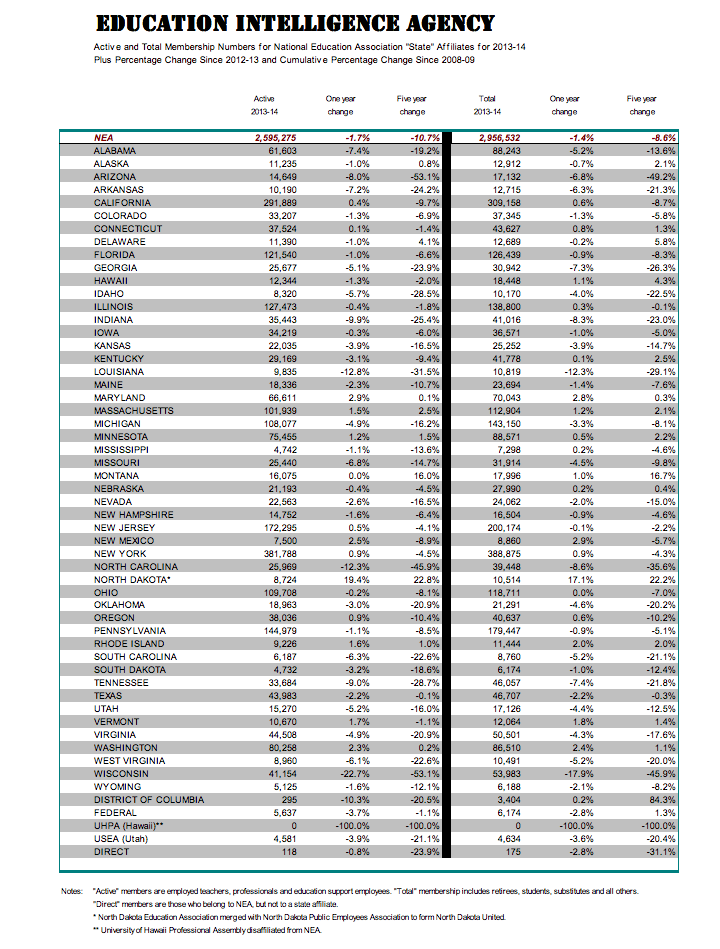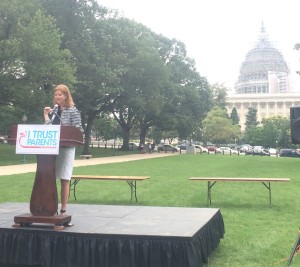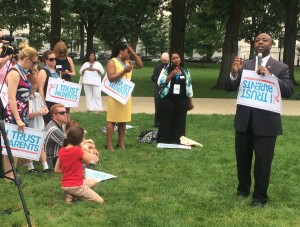Vol. 17, No. 30
KATRINA LESSONS. “New Orleans isn’t perfect, but there are lessons that can be learned from its education reforms,” writes Jason Russell in a Washington Examiner piece detailing a dysfunctional education system in the Big Easy, and how charter schools have helped turn it around since Hurricane Katrina. Stories of schools going above and beyond after the storm hit are numerous, but take for example the Hynes school, which would have taken five years to reopen had it stayed as a traditional district school. However because the school’s leadership decided to switch it to an independently-run public charter school, it took just one year to reopen and start serving students in need of a place to be educated. “The devastation really shed light on how dysfunctional the system really was,” CER President Kara Kerwin told Jason as he sifted through hundreds of pages of CER documents surrounding efforts to help misplaced students. But it shouldn’t have taken an act of God to do something about it,” Kerwin finished. As the 10-year anniversary of Hurricane Katrina approaches, we must continue to pose the question of why we are still so tied to a one-size-fits-all system that isn’t working for all kids when we have examples like this of how freedom and flexibility have helped rebuild and revitalize.
VOUCHER WIN. North Carolina’s Supreme Court ruling of the state’s Opportunity Scholarship Program constitutional last Thursday is a major win not only for students and families in North Carolina, but a major win nationally, affirming indeed that parents and students should have power over decisions about how their children are educated, regardless of their race or zip code. While there’s no doubt more needs to be done in North Carolina and across the nation to improve Parent Power, as just six states earn scores above 80 percent on CER’s Parent Power Index, this is undoubtedly a step in the right direction.
UNION DECLINE. The National Education Association (NEA) has lost 10 percent of its membership in the last five years, according to an analysis from Education Intelligence Agency (EIA). From a pool of perhaps a half-million possible members in the last 15 years, the NEA has added no more than 5,000 members. Despite this, NEA dues revenue has increased. Perhaps this is why more teachers are speaking out about the unfairness of having to pay a “fair share” payment when opting out of a union they feel does not represent their interests or values. The good news for teachers, however, is that persistence can pay off, literally. The young teacher from Massachusetts Newswire told readers about a few weeks ago, who did not want to join the union but had $600 deducted from her paycheck from the union anyway, got all of her money back. We have a feeling this #optout movement isn’t going anywhere anytime soon, as teachers deserve to have control over their hard-earned paychecks just as much as parents deserve to have control over how their children are educated.
SUMMER READING. Newswire is going on vacation next week, so be sure to get your fix by reading this edition, in addition to suggested books below to balance out your summer vacation reading (and don’t forget if you buy them through AmazonSmile, Amazon will donate 0.5 percent of the purchase to CER):
A LIGHT SHINES IN HARLEM. Just named a winner of the prestigious 2015 Phillis Wheatley Book Award, A Light Shines in Harlem, written by Mary C. Bounds, is a must-read of what it took to open the first charter school in New York, the Sisulu-Walker Charter School of Harlem. The book includes a foreword by Dr. Wyatt Tee Walker, Sisulu-Walker co-founder and civil rights hero who served as Martin Luther King’s chief of staff and head of the Southern Christian Leadership Conference (SCLC) during the 1950s and early 60s. Walker writes that the work of Dr. King has far-reaching meaning and can be applied to the charter school movement today, because every child deserves an excellent education, and “it is education that will guarantee that segregation and second-class citizenship will never return!”
LOST CLASSROOM, LOST COMMUNITY. This book, written by Margaret F. Brinig and Nicole Stelle Garnett, focuses on the shift in the urban education landscape, with more than 1,600 Catholic schools closing in the last two decades while public charter schools have grown. Charter schools are undoubtedly a positive contribution to U.S. education, but the closure of Catholic schools is not. Just as charter schools have a ripple effect, this book reveals data showing Catholic schools have a spillover effect on neighborhoods, with a 33 percent lower crime rate in neighborhoods where Catholic schools remain open compared to neighborhoods where they had closed. As CER noted in a 2011 policy paper about saving Catholic schools, a variety of excellent, diverse schooling options are what will make our education system strong. We need a portfolio of different kinds of education options for parents to choose from, which is why we need to expand opportunities for students to attend Catholic and private schools as much as any other kind of school. Because even amidst the nearly three million voucher and tax-credit scholarships made possible by state legislatures, ten percent of these opportunities at most are being utilized by students.















Here Comes The Sun
It seems like only yesterday I walked into CER’s office for the first time. As I entered, I was immediately struck by the CER logo, most specifically by the sun. It was fun, something a little different. However, as time went on, I learned just how much the sun embodies CER’s mission and work.
My experience at CER has been diverse and the opposite of dull. I started my internship knowing “enough” about edreform, and I end it having lived and breathed the movement. My experience here has been invaluable and those who I have been surrounded by could not be more inspirational. The talks and panels I had the opportunity to attend were informative and impassioning. Additionally, the event that the interns put on, “EdReform Past, Present, and Future”, was such a blast and I had a wonderful time moderating.
These opportunities allowed me to see that education is not limited to a traditional public school setting but rather that every child is unique and as a result every child has a right to his own choice of school. Education is the great equalizer; this is something we must cherish as well as protect. The sun can never set on education reform until every parent has a choice so every child has a chance.
I want to thank the amazing team at CER for giving me this wonderful opportunity, as well as my fellow interns for being at my side throughout the learning process and encouraging me each step of the way. Each of you has taught me so much and I wish you all the best on your journey to give every child a chance through choice.
Your passion and leadership has inspired me and I know you will all continue to be movers and shakers in the edreform movement.
Madeline Ryan, CER Intern